| CLICK HERE FOR INDEX PAGE |
| |
| SUBLIMATION PRINTING |
V.Ryan © 2018-2021 |
| |
| PDF FILE - CLICK HERE FOR PRINTABLE WORKSHEET |
| |
| PDF FILE - SUBLIMATION PRINTING - BOX LEARNING EXERCISE |
| |
| YOUTUBE VIDEO - SUBLIMATION PRINTING |
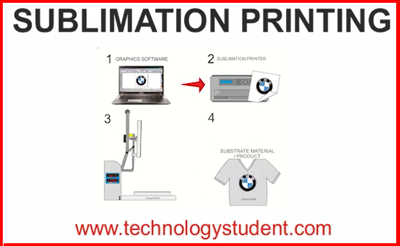 |
| |
| A sublimation printer and associated heat press, allows the user to ‘sublimate’ shapes, patterns and images, on to the surface of materials, such as polypropylene and textiles. |
| |
|
|
| |
| SAMPLE PRODUCTS WITH SUBLIMATION PRINTING |
| |
 |
| |
| It is a straightforward process, whereby a design is produced using CAD software. The design is printed using a sublimination printer, which is very similar to a regular ink jet printer, with the exception that it has been adapted for sublimation ink cartridges. The printed image, is placed on the surface to be sublimated, between the top and bottom plate of a heat press. Pressure and heat is applied (according to the manufacturers recommended time and temperature), turning the printed image into a gas. The gas penetrates the surface of the material and solidifies, produces a permanent image. Once cool, the printed product can be removed. |
| |
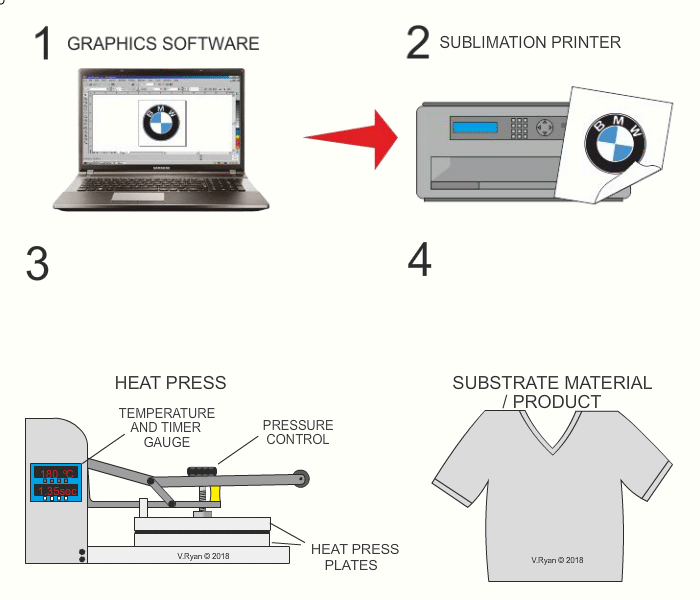 |
| |
|
|
| |
| A sublimation printer ensures the correct pixelisation, colour management and density of the images. Some sublimation printers rely on liquid based inks, which can dry out, if not used at least once a week. Printers that use gel based cartridges, are less likely to dry out. Yellow, Magenta, Cyan and Black cartridges are typically used. For high volume printing, ‘bulk’ printing systems can be purchased, replacing the need to replace expensive cartridges regularly. |
| |
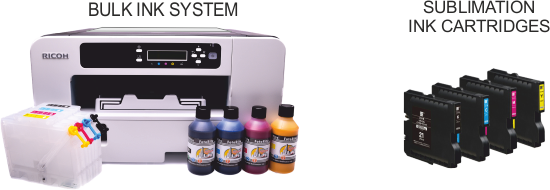 |
| |
‘Blank’, is the technical term given to a ‘ready made product’, that can be used to receive the image. Mugs, bags and T Shirts, are good examples of blanks.
Sublimation tape (suitable for ‘hard’ materials) or adhesive (suitable for textiles materials), does not degrade or leave a stain, when heat is applied to it. Its function, is to hold the printed sublimation paper (image) in position, throughout the heat and pressure process. Usually tape or adhesive is not needed, as the printed image stays in position.
The function of a heat press (Heat Press Transfer Machine) is to transfer the printed image from the sublimation paper ,to another material (called a substrate). Heat and pressure are applied for a predetermined length of time. The heat and time is set using a digital gauge and the pressure is set using a mechanical control. The size of the print is usually determined by the size of the heat press plate. A variety of heat presses exist, including those specifically for printing on to curved surfaces, as found with mugs and cups. |
|
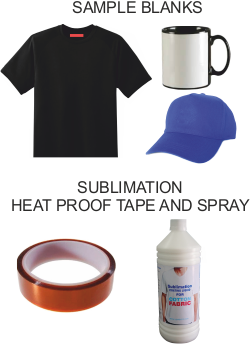 |
| |
|
|
| |
| SYSTEMS DIAGRAM - SUBLIMATION PRINTING |
| |
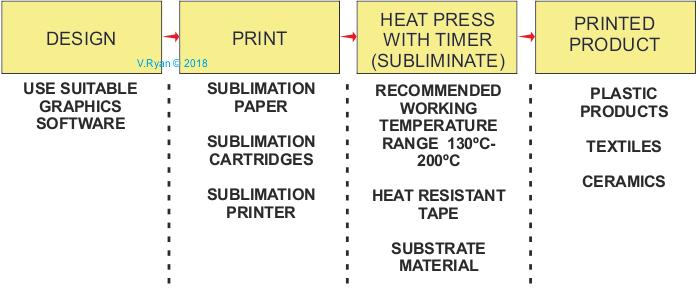 |
| |
| |
| CLICK HERE FOR GRAPHICS INDEX PAGE |
| |
|
| |
|





